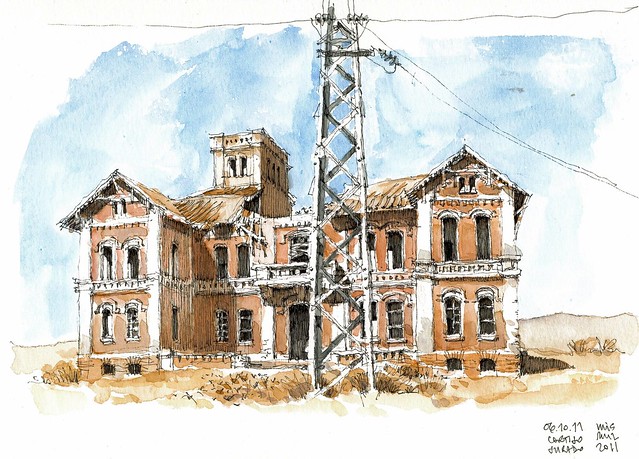
Muchas poblaciones tienen un punto de vista fijado por la tradición de varios siglos de representaciones gráficas, ya sea en grabados, dibujos o, más recientemente, fotografías, desde el que se las suele representar de forma preferente. En el caso de Málaga ese es, sin duda, la vista del frente marítimo observado desde los espigones del puerto.
Al contemplar esas antiguas imágenes, no podemos evitar sentir como nos invade una cierta sensación de melancolía. La imagen de la catedral irguiéndose majestuosa sobre los tejados, insólitamente cerca del mar, y entrevista entre mástiles de navíos, se ha perdido para siempre. Las sucesivas ampliaciones de las instalaciones portuarias han adaptado el espacio a las nuevas exigencias del transporte marítimo, pero al precio de la pérdida de lo pintoresco.
Y... sin embargo, aún hoy, un paseo por los muelles nos ofrece todavía perspectivas insólitas. La visita de un viejo velero o la mirada desde el puerto pesquero a través de las grúas son estampas que nos recuerdan que el origen de esta urbe se remonta a la aparición por levante de unas cóncavas naves de velas latinas. Hace ya casi tres milenios...
Many cities have a fixed vantage point from where the tradition of several centuries of graphic representations, whether in prints, drawings and, more recently, photographs, usually depict. In the case of Málaga that is, without doubt, the waterfront view observed from the jetties of the port. In contemplating these old pictures, we can not avoid feeling a certain sense of melancholy. The image of the cathedral towering majestically over the roofs, unusually close to the sea and glimpsed through ships' mastheads, is lost forever. Successive enlargements of the port facilities have adapted the space to the new demands of shipping, but at the cost of the loss of the picturesque. And, however, even today, a walk along the docks still offers unusual views. The visit of an old sailing ship, or the view from the fishing port through the cranes are sights that remind us that the origin of this city dates back to the occurrence of concave ships fitted with lateen sails. Nearly three millennia ago ...






